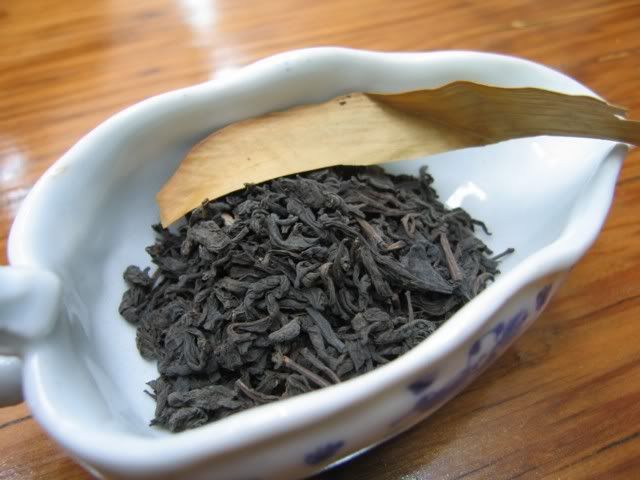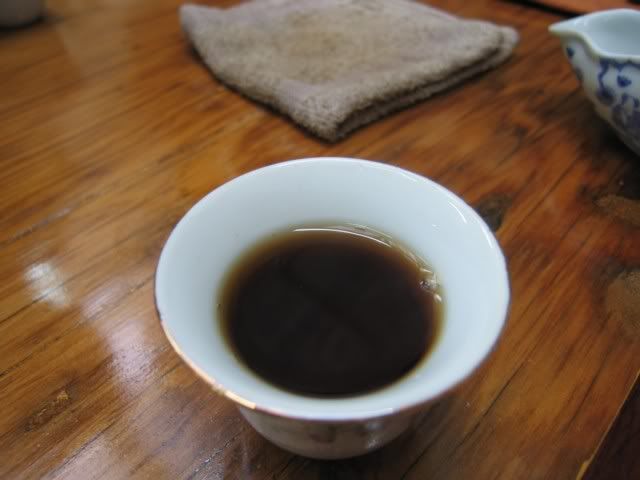Those of you who frequent teachat have probably seen me post this up already, but in case you haven’t…
The guy, shall we say, takes his time. The thing that really bothers me about this kind of brewing, and more specifically, this kind of video, is that they give people entirely the wrong impression of how tea is done in China. Other than set performances at tea fairs, where they might hold tea brewing competition and the participants are expected to come up with elaborate (usually over-elaborate) ways of brewing tea that look artistic, you’ll never see people make tea like this guy does.
More importantly, the way he dresses and sits implies a certain sense of historical tradition, which of course is also entirely bogus. This is what my friend DougH calls “ceremony envy”, stemming largely from the sense that “well, the Japanese have their elaborate and famous tea ceremony, so we should have one too”. The need to invent a “ceremony” is, I think, the root cause of this kind of video. Chinese, however, never brewed tea this way — certainly not like this. For one, tea brewing was mostly done by servants. Ever seen those paintings of literati men sitting in their courtyard drinking tea? In the background there are always a few servant girls or young boys fanning the flame, preparing the tea. You think they did any of this ceremonial stuff?
This is the other thing about calling this, or any type of gongfu brewing, a “ceremony”. Ceremony implies a certain amount of performance, and at least in the modern usage of the word, a sense that you do them because you should, not because they’re useful. This guy’s performance definitely fits the bill — he had a lot of useless movements that really didn’t enhance the tea he was brewing. In fact, I’d hate to be on the receiving end of this tea — it’s probably nasty.
This is the other thing different about the Japanese tea ceremony versus the Chinese way of brewing tea. The Japanese ceremony is methodical, slow, and elaborate, but making a good bowl of matcha is a primary goal as well. The things you do in there — adding the cold water, warming the bowl, etc, all serve a purpose. The way this guy brewed his tea is rather unique – he’s actually boiling the tea. In most other videos, however, they brew it normally, except in the time it took them to do all their fancy things, the water, or the tea, has cooled. I cannot imagine any of these people brewing anything resembling good tea. I’m pretty sure this guy’s boiling his tea because he read it in some old tea text, except that it’s all out of context.
Chinese tea brewing has always been very practical, and has evolved over time to suit the needs of the way Chinese drink tea – which is to say, whole leaf tea, brewed in hot water. Chaozhou style brewing, from which modern gongfu tea has evolved, works, because it is not concerned with looking good, but rather tasting good. For those who want a spiritual experience, it doesn’t have to come in the form of elaborate rituals, dictated by some odd, nonsensical rules. I think spiritual enlightenment can be found as well in the casual brewing on a day to day basis, but done in a way that concentrates the mind. Refinement of one’s skill through practice does not require a dictated set of rules that one needs to follow.
And don’t even get me started on the narrator in this video. She (or whoever wrote that script) needs to be shot.



Well met observation, just wow. Using bad photos to guide purchases, people may end up buying teas they actually don't…